Religion and rites were of fundamental importance in the life of the Mexica people, and among these, human sacrifice stands out, the maximum offering that could be made to the gods.
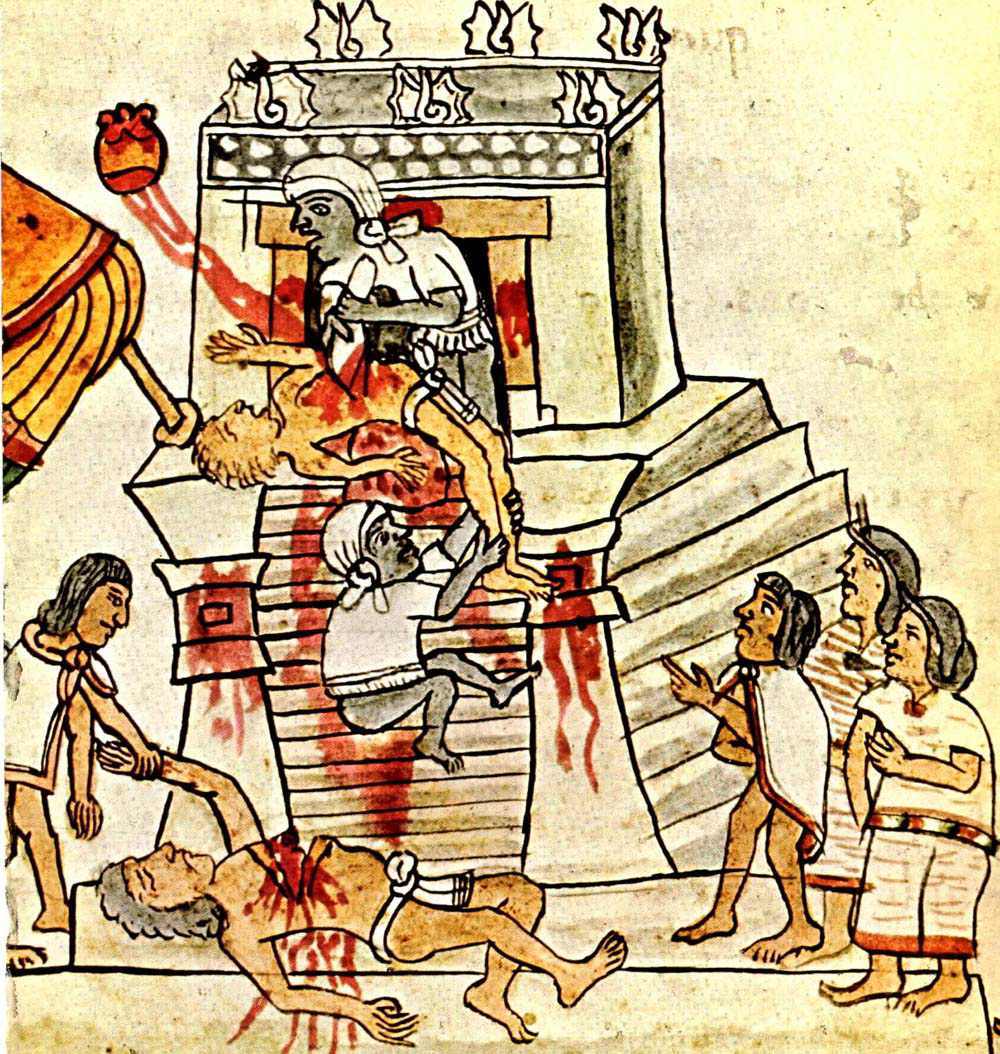
Although human sacrifice was not an exclusive practice of the Mexica but of the entire Mesoamerican area, it is from them that we have the most information, both from indigenous and Spanish chroniclers. This practice, in addition to which undoubtedly caught their attention, was used by the latter as one of the main justifications for the Conquest.
Both the chronicles were written in Nahuatl and Spanish, as well as the iconography contained in the pictographic manuscripts, describe in detail the different types of human sacrifice that were carried out in Mexico-Tenochtitlan, the insular capital of the Mexica.
Human sacrifice of Mexicas
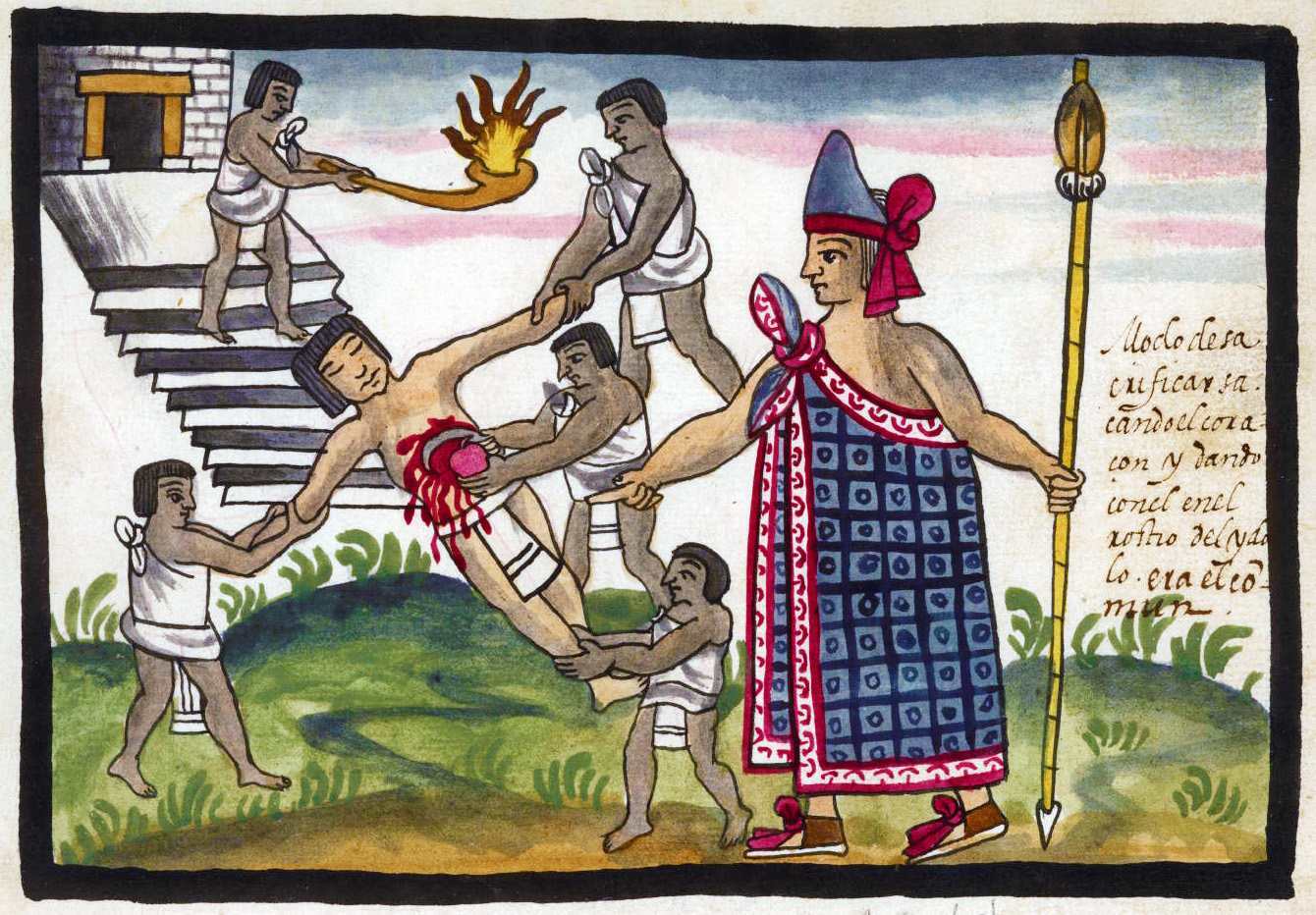
One of the most frequent immolations in Aztec culture was the extraction of the victim’s heart. When the Spanish conquistador Hernán Cortés and his men arrived in the Aztec capital of Tenochtitlán in 1521, they described witnessing a grisly ceremony. Aztec priests, using razor-sharp obsidian blades, sliced open the chests of sacrificial victims and offered their still-beating hearts to the gods. They then tossed the victims’ lifeless bodies down the steps of the towering Templo Mayor.
In 2011, historian Tim Stanley wrote:
That number is disputed, however. Some say as few as 4,000 were sacrificed during what was actually a re-consecration of the Templo Mayor in 1487.
3 kinds of ‘bloody rituals’
In pre-Hispanic Mexico, and particularly among the Aztecs, 3 kinds of bloody rituals related to the person were practiced: self-sacrifice or rituals of blood effusions, rituals associated with wars and agrarian sacrifices. They did not consider human sacrifice as a specific category, but formed an important part of the ritual a determined.
Human sacrifices were carried out especially during festivals on a calendar of 18 months, each month with 20 days, and corresponded to a certain divinity. The ritual had as its function the introduction of man into the sacred and served to make known his introduction into a different world such as the one corresponding to heaven or the underworld, and for this, it was necessary to have an enclosure and have a ritual.
The enclosures used presented various characteristics, from a natural setting on a mountain or hill, a forest, a river, a lagoon or a cenote (in the case of the Mayans), or they were enclosures created for this purpose as temples and pyramids. In the case of the Mexica or Aztecs already located in the city of Tenochtitlan, they had a Greater Temple, the Macuilcall I or Macuilquiahuitl where the spies of enemy cities were sacrificed, and their heads were skewered on a wooden stake.
Tower of skulls: New findings
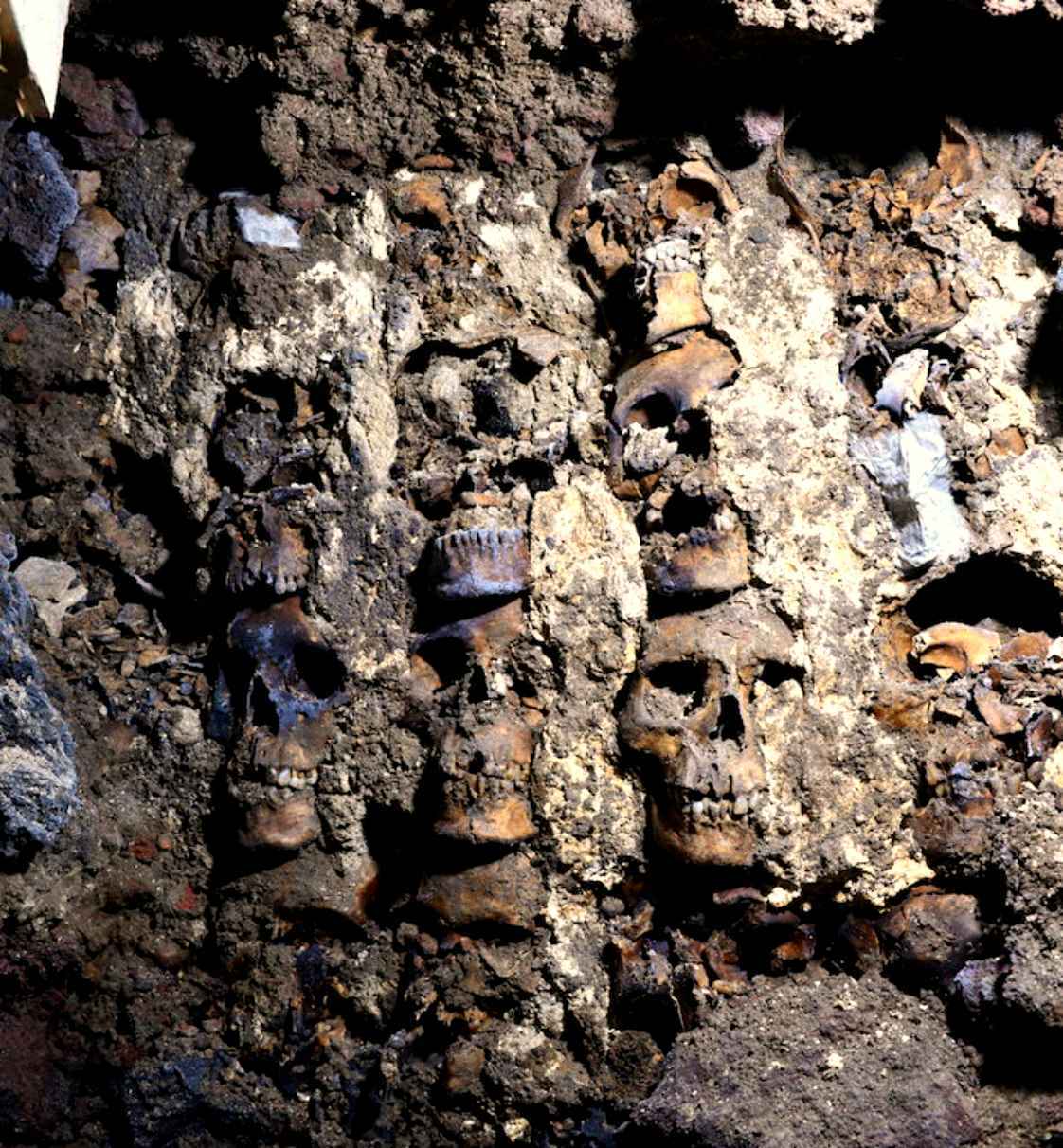
In late 2020, archaeologists from the Mexican National Institute of Anthropology and History (INAH) had located in the heart of Mexico City the external façade and the east side of the tower of skulls, the Huey Tzompantli de Tenochtitlan. In this section of the monument, an altar where the still bloody heads of sacrificed captives were impaled in public view in order to honour the gods, 119 human skulls have appeared, adding to the 484 previously identified.
Among the remains found from the time of the Aztec Empire, evidence of sacrifices of women and three children (smaller and with teeth still in development) has appeared, since their bones are embedded in the structure. These skulls were covered in lime, forming part of the building located near the Templo Mayor, one of the main places of worship in Tenochtitlán, the Aztec capital.
Huei Tzompantli
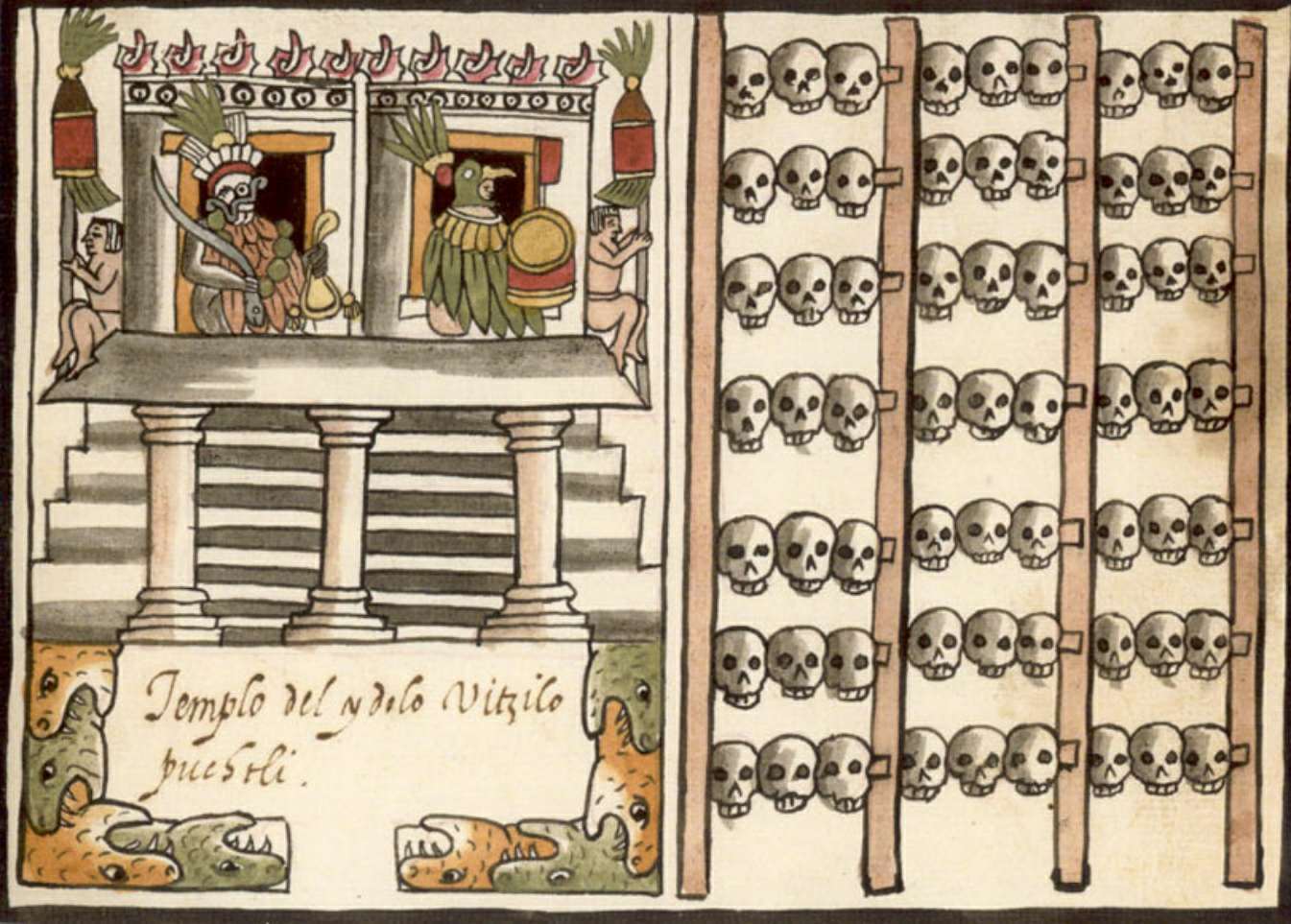
The structure, called Huei Tzompantli, was first discovered in 2015 but continues to be explored and studied. Previously, a total of 484 skulls had been identified in this place whose origin dates back at least to a period between 1486 and 1502.
Archaeologists believe that this site was part of a temple dedicated to the Aztec god of the sun, war, and human sacrifice. They also detailed that the remains probably belonged to children, men and women killed during these sacrificial rituals.
Huey Tzompantli instilled fear in the Spanish conquerors
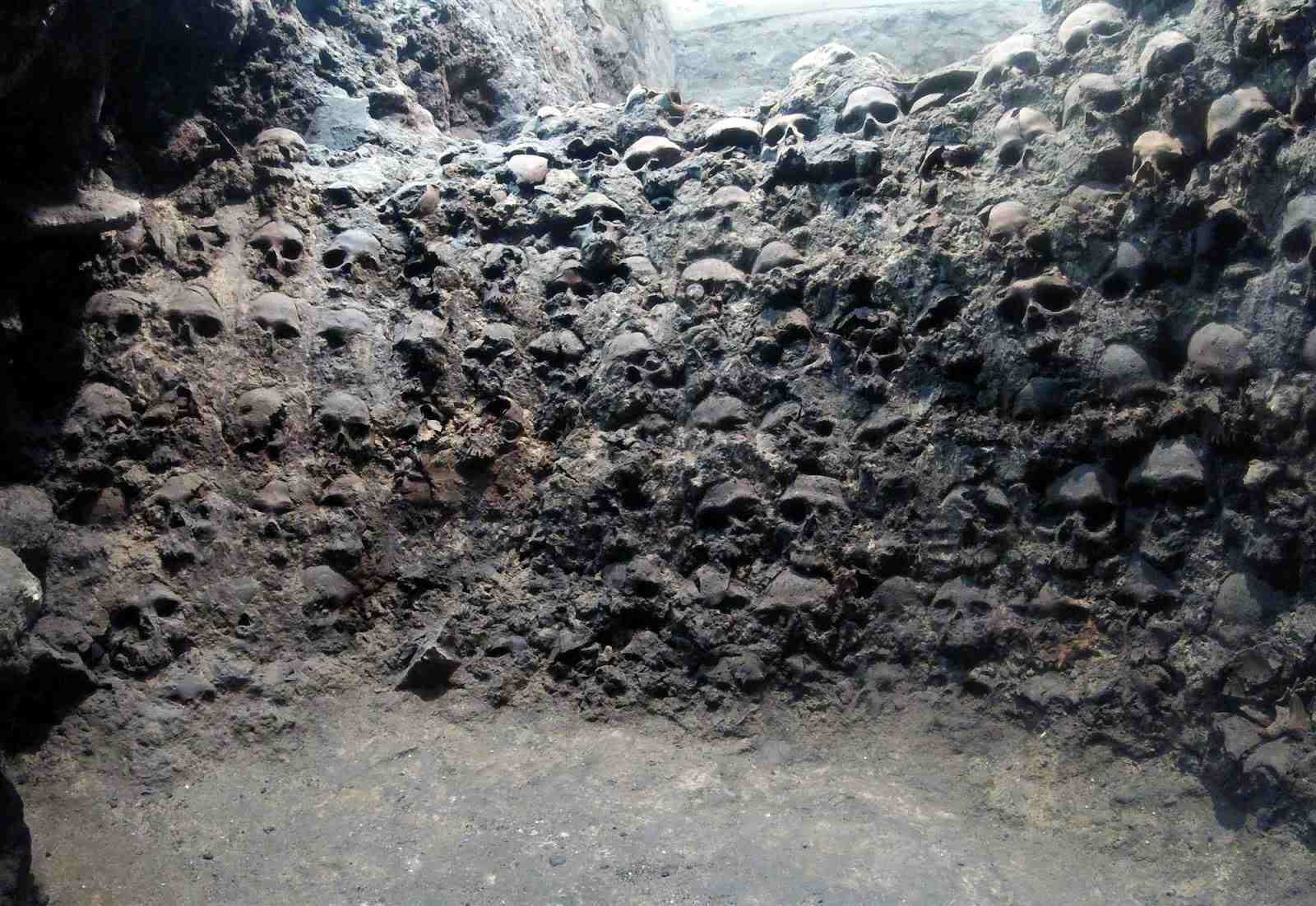
Contemplating the Huey Tzompantli instilled fear in the Spanish conquerors when, under the command of Hernán Cortés, they captured the city in 1521 and put an end to the all-powerful Aztec empire. His surprise was evident in the texts of the time (as previously cited). The chroniclers relate how the severed heads of captured warriors adorned the tzompantli (“tzontli” means ‘head’ or ‘skull’ and “pantli” means ‘row’).
This element is common in several Mesoamerican cultures before the Spanish conquest. Archaeologists have identified three phases of construction of the tower, dating from between 1486 and 1502. But this excavation in the bowels of ancient Mexico City, which began in 2015, suggests that the image that was held until now was not of everything complete.
The skulls would have been placed in the tower after having been publicly displayed in the tzompantli. Measuring approximately five meters in diameter, the tower stood at the corner of the chapel of Huitzilopochtli, the Aztec god of the sun, war, and human sacrifice who was the patron of the Aztec capital.
There is no doubt that this structure was part of one of the skull buildings mentioned by Andrés de Tapia, a Spanish soldier who accompanied Cortés. Tapia detailed that there were tens of thousands of skulls in what became known as Huey Tzompantli. Specialists have already found a total of 676 and are clear that this number will increase as the excavations progress.
Final words
The Aztecs dominated the centre of what is now Mexico between the 14th and 16th centuries. But with the fall of Tenochtitlan at the hands of Spanish soldiers and their indigenous allies, most of the last phase of construction of the ritual monument was destroyed. What archaeologists are compiling today are the broken and obscured parts from the rubble of Aztec history.



